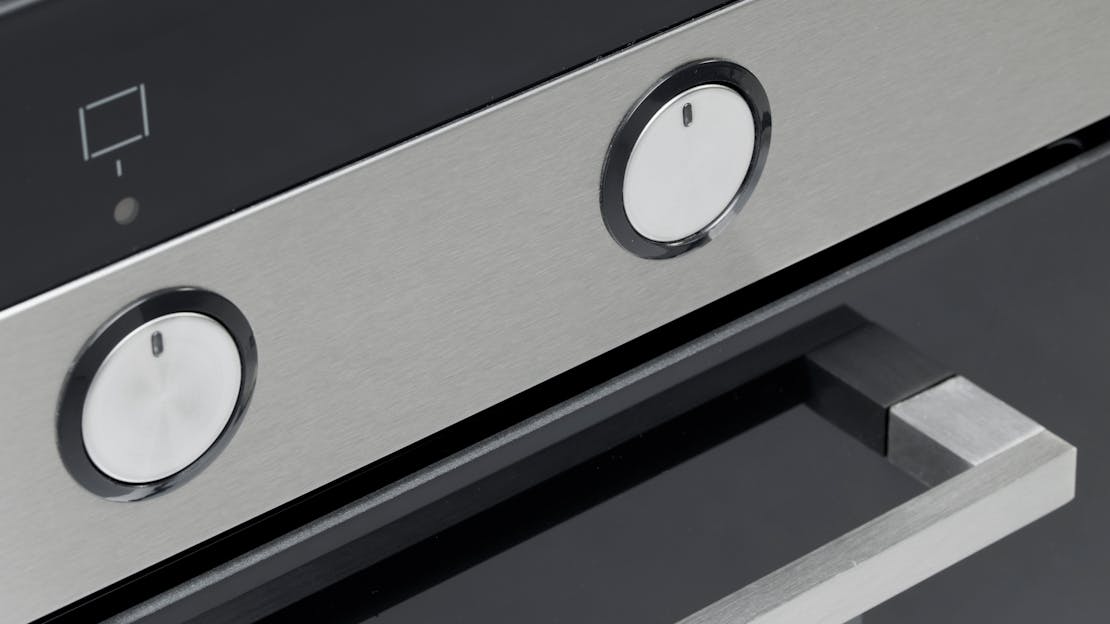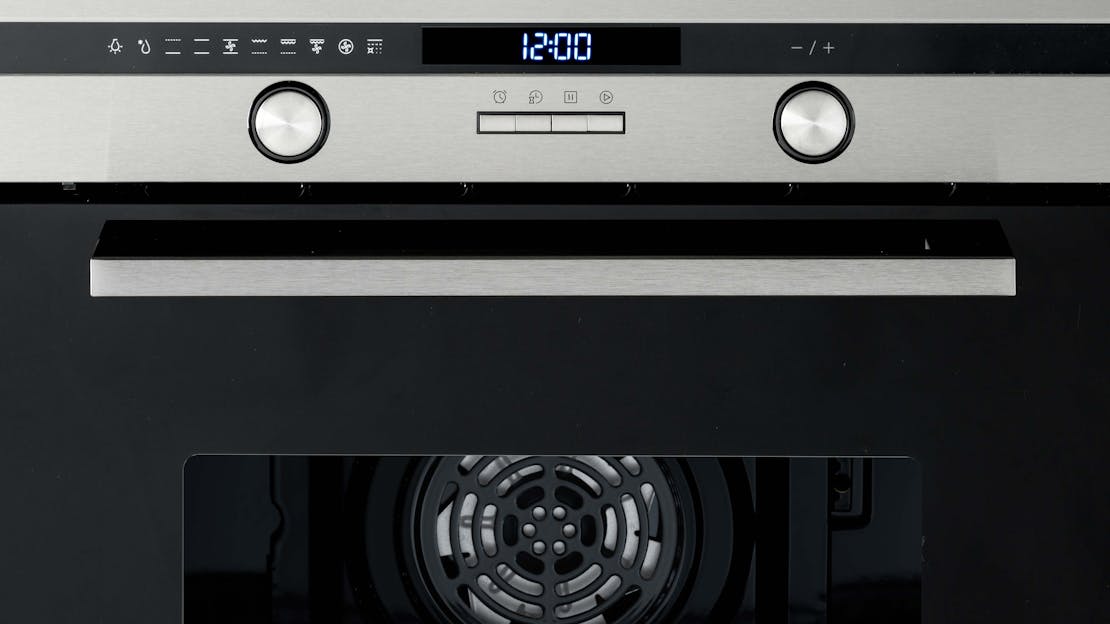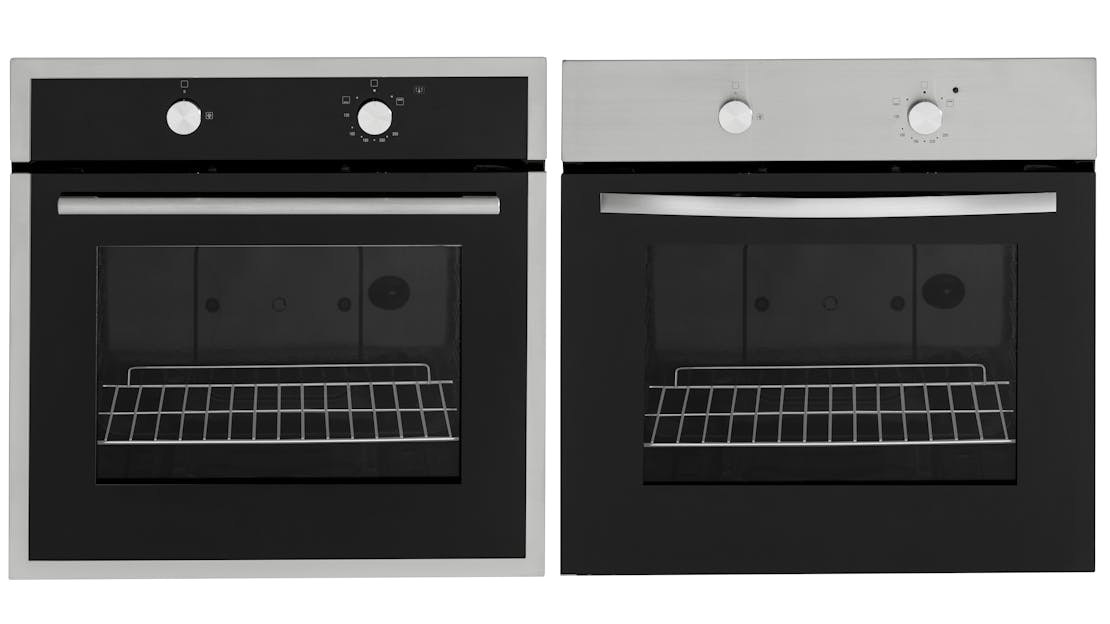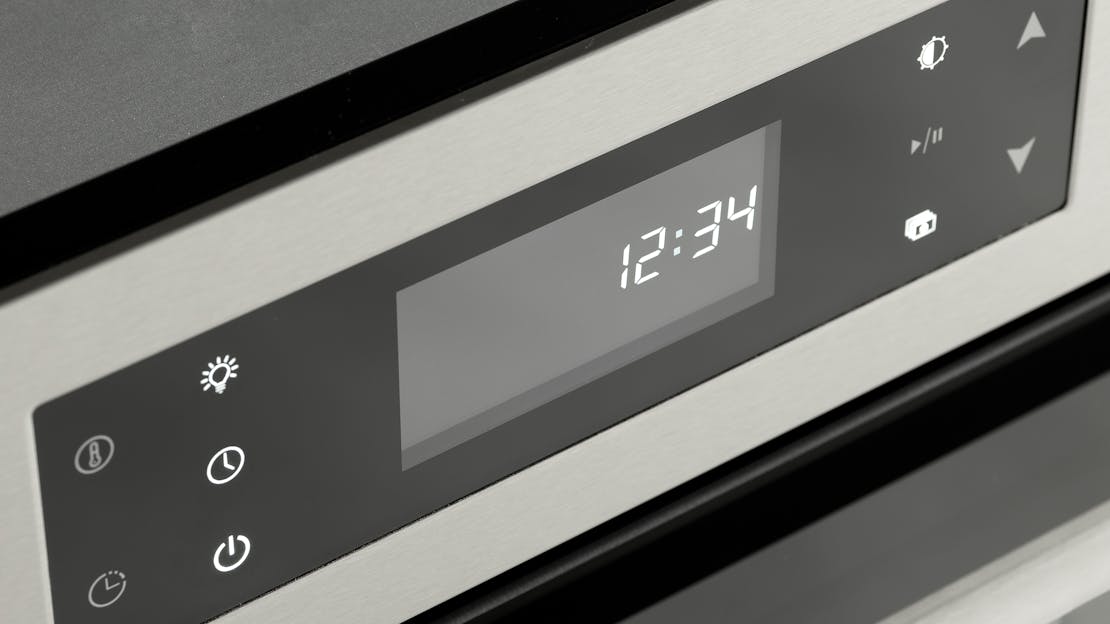
The Ultimate Guide to Single Electric Ovens
In the heart of every kitchen, the choice of the right oven plays a pivotal role in transforming raw ingredients into culinary masterpieces. Single electric ovens, with their versatility and convenience, have become a cornerstone appliance for countless households. Whether you're a passionate home chef or simply looking for a reliable cooking companion, understanding the ins and outs of single electric ovens is essential.
The Importance of Choosing the Right Oven
The oven you select can make or break your culinary endeavours. Its capabilities impact the texture, taste, and presentation of your dishes. A well-chosen oven can save you time, energy, and money, while also enhancing your cooking experience.
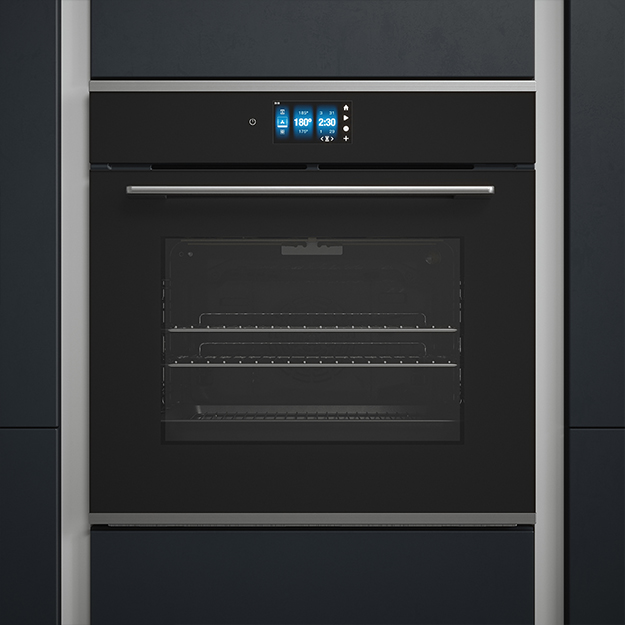
Why is it Important?
- Cooking Precision: Achieve precise temperatures and even cooking for consistent results.
- Time Efficiency: Reduce cooking times and achieve better multitasking in the kitchen.
- Energy Efficiency: Opt for ovens that are eco-friendly and cost-effective in the long run.
- Versatility: Discover various cooking modes and settings for a wide range of dishes.
- Durability: Ensure your investment stands the test of time with proper maintenance.
Guide Overview
This comprehensive guide is designed to empower you with the knowledge needed to make an informed decision when selecting a single electric oven for your kitchen. Throughout this guide, we will delve into various aspects of single electric ovens, including:
Understanding Single Electric Ovens: We'll define what single electric ovens are and why they're a popular choice among homeowners.
Types of Single Electric Ovens: Explore the different types, such as conventional, convection, and multifunction ovens, to find the one that suits your cooking style.
Oven Sizes and Capacities: Learn how to choose the right oven size and capacity to match your cooking needs.
Essential Features to Consider: Discover the key features that can elevate your cooking experience, from temperature control to self-cleaning options.
Energy Efficiency and Sustainability: Understand the energy efficiency of single electric ovens and how to make eco-friendly choices.
Maintenance and Care: Get tips on keeping your oven in top shape for years to come, and troubleshoot common issues.
Budget Considerations: Find out how to balance your budget with your oven needs, ensuring you get the best value.
Installation and Safety: Learn about the proper installation and safety measures when using single electric ovens.
Frequently Asked Questions: Get answers to common questions about single electric ovens to clear any doubts.
Armed with this knowledge, you'll be well-equipped to choose the perfect single electric oven that fits your kitchen and cooking aspirations. Let's embark on this culinary journey together as we explore the world of single electric ovens and unlock their full potential.
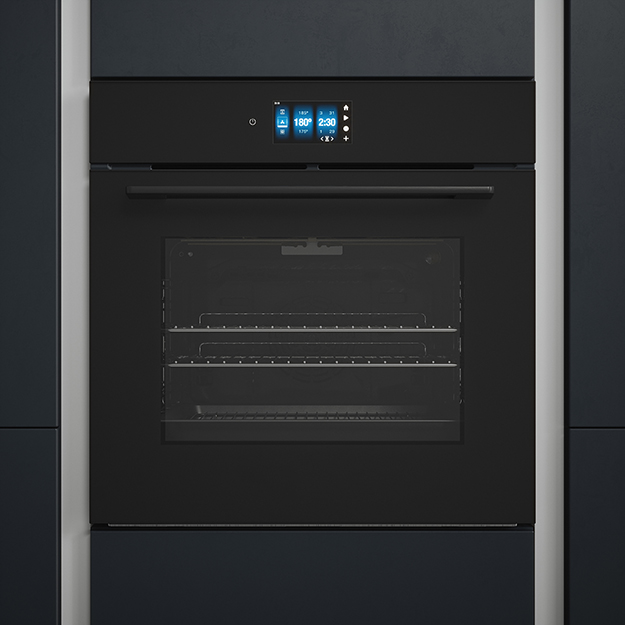
What is a Single Electric Oven?
A single electric oven is a kitchen appliance designed for baking, roasting, and cooking various dishes using electricity as the primary source of heat. In contrast to gas ovens, which rely on gas burners for heating, single electric ovens use heating elements, typically located at the top and bottom of the oven cavity, to generate and evenly distribute heat.
Key Features and Benefits of Single Electric Ovens
Key Features:
- Temperature Control: Single electric ovens offer precise temperature control, allowing you to set and maintain the desired cooking temperature accurately.
- Versatility: They come equipped with various cooking modes, including baking, grilling, convection, and more, enabling you to prepare a wide range of dishes.
- Even Heating: The heating elements in electric ovens ensure even heat distribution, resulting in consistent cooking results.
- Ease of Use: They are user-friendly, often featuring digital controls, timers, and pre-set cooking functions for added convenience.
- Safety: Electric ovens are considered safer than gas ovens due to the absence of open flames or gas leaks.
- Self-Cleaning Options: Many modern single electric ovens offer self-cleaning features, making maintenance easier.
Benefits:
- Consistency: Single electric ovens maintain stable temperatures, reducing the likelihood of overcooking or undercooking your dishes.
- Precision: Accurate temperature control allows for precise cooking, ideal for baking delicate pastries and roasting meats.
- Ease of Installation: Electric ovens are easier to install compared to gas ovens since they don't require gas lines or ventilation systems.
- Energy Efficiency: Electric ovens are often energy-efficient, converting a higher percentage of energy into heat for cooking.
- Suitable for Various Cooking Styles: They are versatile and can accommodate various cooking styles, from traditional baking to advanced convection cooking.
Why Single Electric Ovens are a Popular Choice
Single electric ovens have gained popularity for several reasons:
Ease of Use: They are straightforward to operate, making them suitable for both novice and experienced cooks.
Widespread Availability: Single electric ovens are widely available in the market, offering a wide range of options to fit different budgets and needs.
Safety: The absence of an open flame or gas supply reduces the risk of accidents, making them a safer choice for many households.
Precise Cooking: Their accurate temperature control and even heat distribution ensure consistent and reliable cooking results.
Versatility: Single electric ovens come with various cooking modes and settings, making them versatile enough to handle a variety of cooking tasks.
Differences Between Single Electric Ovens and Other Types
Gas Ovens vs. Single Electric Ovens:
- Gas ovens use flames for heating, which can result in uneven cooking and require proper ventilation.
- Single electric ovens provide more precise temperature control and even heating, making them ideal for baking.
Double Ovens vs. Single Electric Ovens:
- Double ovens consist of two separate oven compartments, allowing you to cook multiple dishes at different temperatures simultaneously.
- Single electric ovens have a single oven compartment, which may be sufficient for most households but lacks the flexibility of double ovens.
Convection Ovens vs. Single Electric Ovens:
- Convection ovens, whether gas or electric, have a fan that circulates hot air for even cooking.
- Single electric ovens can also have convection features, but their primary distinction is the heating method (electric vs. gas).
Each type of oven has its advantages and considerations, and the choice ultimately depends on your cooking preferences and kitchen requirements.
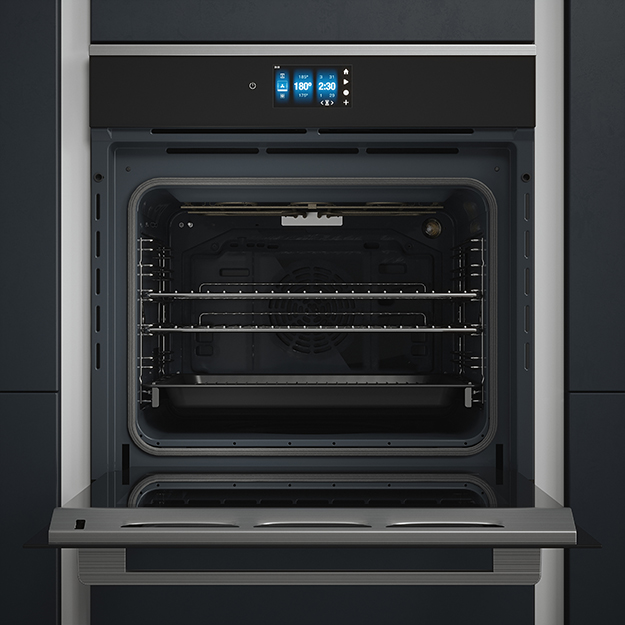
Types of Single Electric Ovens
There are multiple types of single electric ovens, each with their own unique features and advantages. In this section of the guide, we'll explore the three most common types of ovens, providing you with a deep understanding of their functionality, benefits, and potential drawbacks.
Conventional Ovens
- How Conventional Ovens Work: Conventional ovens, also known as static ovens, operate on a straightforward heating principle. They use two heating elements, one at the top and one at the bottom of the oven cavity. When you set the desired temperature, both heating elements activate, gradually heating the oven's interior. The heat rises from the bottom element and radiates downward from the top element to create a consistent cooking environment.
- Pros of Conventional Ovens:
- Familiarity: Many people are accustomed to conventional ovens, as they have been a staple in kitchens for a long time.
- Even Cooking: Conventional ovens provide even heat distribution, making them suitable for baking and roasting a wide range of dishes.
- Versatility: They offer various cooking modes, such as baking, broiling, and roasting.
- Reliability: Conventional ovens are known for their durability and reliability.
- Cons of Conventional Ovens:
- Longer Cooking Times: They often require longer cooking times compared to convection ovens.
- Uneven Browning: Certain dishes may experience uneven browning, as the heat source is primarily from the top and bottom.
- Heat Loss: When you open the oven door, a significant amount of heat escapes, affecting cooking consistency.
- Limited Efficiency: Conventional ovens may not be as energy-efficient as convection ovens due to longer cooking times.
Convection Ovens
- How Convection Ovens Work: Convection ovens, in contrast to conventional ovens, feature a built-in fan and an additional heating element (usually located near the fan). This fan actively circulates hot air around the food, creating a consistent and even cooking environment. The fan's continuous movement of air ensures that heat reaches all areas of the oven, resulting in faster and more uniform cooking.
- Pros of Convection Ovens:
- Even Cooking: Convection ovens provide superior heat distribution, reducing the likelihood of unevenly cooked dishes.
- Faster Cooking: The constant airflow reduces cooking time, making convection ovens more energy-efficient.
- Crispier and Browner Results: Dishes often come out with a crispier and browner exterior due to the consistent heat circulation.
- Versatility: Convection ovens can handle a wide range of cooking tasks, from baking to roasting and more.
- Temperature Precision: They offer precise temperature control for accurate cooking.
- Cons of Convection Ovens:
- Learning Curve: Some users may need time to adjust to cooking with convection ovens due to the differences in cooking times and techniques.
- Higher Cost: Convection ovens are often more expensive than conventional ovens due to their added features.
- Potential Drying: In certain cases, the fan's constant airflow can lead to drying out of some dishes if not monitored closely.
Multifunction Ovens
- How Multifunction Ovens Work: Multifunction ovens, also known as multifunctional ovens, are versatile appliances that combine various cooking methods in a single unit. They typically offer a combination of conventional and convection heating, along with additional features like grilling, conventional, and convection functions. These ovens provide a wide range of cooking options in one appliance, making them suitable for diverse cooking needs.
- Pros of Multifunction Ovens:
- Versatility: Multifunction ovens provide a wide range of cooking options in one appliance, making them suitable for diverse cooking needs.
- Time Efficiency: With combined cooking methods, they offer faster cooking times without compromising on food quality.
- Cooking Precision: You can select the most suitable cooking mode for different recipes, ensuring consistent and reliable results.
- Space-Saving: By combining multiple cooking methods in one appliance, they save space in the kitchen compared to having separate devices.
- Improved Flavours: Some multifunction ovens offer steam cooking options, which help retain moisture and enhance the flavour of dishes.
- Cons of Multifunction Ovens:
- Complexity: The variety of cooking options and settings in multifunction ovens may be overwhelming for some users, requiring a learning curve.
- Higher Cost: These ovens are generally more expensive than basic conventional or convection ovens due to their added features.
- Space Requirements: While they save space compared to having separate appliances, multifunction ovens still require a certain amount of kitchen space.
In conclusion, understanding conventional ovens, convection ovens, and multifunction ovens is vital when selecting the right fit for your kitchen. Each type offers distinct advantages and drawbacks. Whether you opt for the familiarity of conventional ovens, the precision of convection ovens, or the versatility of multifunction ovens, may your chosen appliance serve as a reliable companion in your culinary journey, making delicious meals with ease.
Oven Sizes and Capacities
When selecting an oven for your kitchen, understanding the size and capacity is essential. In this section, we'll delve into the various aspects of oven size and why it's crucial to make an informed choice.
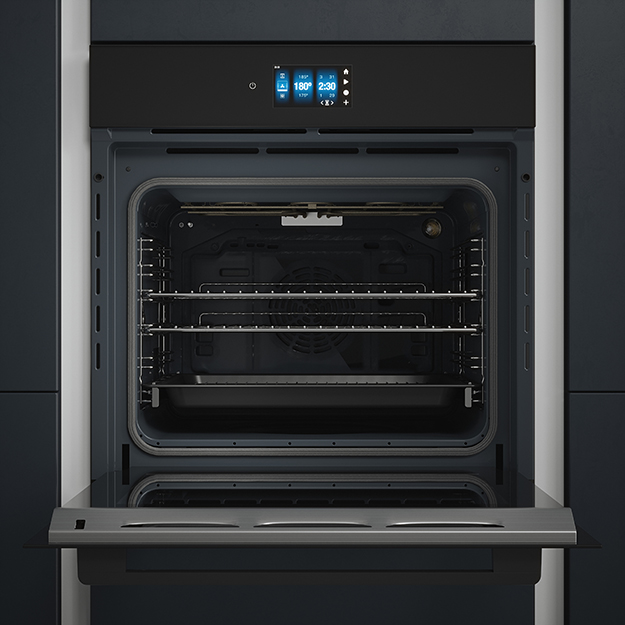
How Oven Size is Measured
Oven size is typically measured in two ways:
1. External Dimensions: These measurements include the width, height, and depth of the oven itself. It's crucial to consider these dimensions to ensure that the oven fits comfortably within your kitchen space and cabinetry.
2. Internal Capacity: This measurement is usually expressed in litres and represents the total cooking space inside the oven, including all racks and shelves. The internal capacity determines how much food you can cook at once and whether the oven can accommodate larger dishes or multiple trays.
The Importance of Choosing the Right Size
Selecting the correct oven size is more than just a matter of fit; it has a significant impact on your cooking experience:
Efficiency
An oven that matches your cooking needs prevents energy wastage. A large oven for small meals can consume unnecessary energy, while a small oven might require you to cook in batches, resulting in increased energy consumption.
Space Utilisation
The right oven size ensures efficient use of your kitchen space. It should fit seamlessly within your cabinetry, leaving room for other appliances and countertop activities.
Cooking Flexibility
A properly sized oven allows you to prepare various dishes simultaneously, streamlining meal preparation, especially when cooking for guests or a family.
Even Cooking
Ovens with ample internal space provide better air circulation, leading to more consistent cooking and browning of dishes.
Recommendations Based on Household Needs
To help you make an informed decision, here are some recommendations based on different household sizes:
Singles: Individuals living alone or with minimal cooking needs can opt for compact ovens with an internal capacity of around 50-60 litres. Consider the functionality rather than the capacity.
Couples: Couples may find ovens with a slightly larger capacity, typically in the range of 55-65 litres, suitable. This size accommodates most common dishes and allows for versatility in meal preparation.
Families: Families, especially larger ones, should consider ovens with a capacity of 65 litres or more. Some families may benefit from double ovens or oven cookers with multiple compartments to handle simultaneous cooking.
Internal Capacity and Shelving Options
Understanding the internal capacity of your oven is essential for efficient meal planning. It helps you determine the number and size of dishes you can cook simultaneously, making meal preparation smoother.
Additionally, explore the shelving options provided by the oven. Most ovens feature adjustable racks or shelves, allowing you to configure the interior to accommodate different types of cookware and dishes. This flexibility maximises your cooking space and versatility.
In conclusion, choosing the right oven size and configuration ensures that your cooking needs are met efficiently and that your kitchen space is optimally utilised. Consider the recommendations based on your household size, and explore the internal capacity and shelving options for a more enjoyable and efficient culinary experience.
Essential Features to Consider
When selecting the right oven for your kitchen, it's essential to evaluate key features that can significantly impact your cooking experience. In this section, we'll explore important features to keep in mind when making your choice.
Temperature Control
The Importance of Accurate Temperature Control
Precise temperature control is fundamental to successful cooking. It ensures that your dishes are cooked to perfection, with the right texture and flavour. Accurate temperature control enables you to follow recipes closely and achieve consistent results.
The Difference Between Manual and Digital Controls
Ovens offer two main types of temperature control:
Manual Controls: These ovens feature traditional dials or knobs for setting temperatures. They are straightforward and reliable but may lack the precision of digital controls.
Digital Controls: Digital ovens come equipped with electronic displays and buttons that allow you to set and monitor temperatures with precision. They often offer programmable features and timers, making your cooking experience more convenient and accurate.
Cooking Modes and Settings
Common Cooking Modes
Modern ovens provide a range of cooking modes and settings, including:
| Oven Function | Description |
|---|---|
| Bake | Standard cooking mode for baking and roasting; heat comes from the bottom heating element. |
| Grill | Top-down heat for browning and crisping dishes, often used for melting cheese or grilling. |
| Convection Bake | Uses a fan to circulate hot air evenly, ideal for baking multiple items simultaneously. |
| Convection Roast | Similar to convection bake, but optimised for roasting meats, providing even browning. |
| Convection Grill | Combines grilling with convection for quick and even browning of the top layer of dishes. |
| Double Grill | Intense direct heat from the top heating element for grilling, often used for meats and vegetables. |
| Convection Steam | Introduces steam into the cooking process, ideal for maintaining moisture and tenderness. |
| Steam Bake | Uses steam to bake, suitable for bread, pastries, and dishes requiring a crisp crust and moist interior. |
| Warming | Low heat to keep dishes warm without further cooking, great for holding food at serving temperature. |
| Dehydrate | Low, consistent heat with a fan to remove moisture, perfect for drying fruits, herbs, and meats. |
| Proof | A low-temperature setting for proofing bread and allowing dough to rise. |
These are some of the most common oven functions you'll find in modern ovens in the UK. The availability of these functions may vary depending on the oven model and brand, but they cover a wide range of cooking methods to suit various recipes and culinary needs.
The Benefits of Various Cooking Settings
Each cooking mode serves a specific purpose, allowing you to tailor your cooking method to the dish you're preparing. Understanding and utilising these settings can elevate your culinary creations, ensuring they turn out exactly as you envision.
Self Cleaning Options
The Advantages of Self Cleaning Ovens
Self cleaning ovens have revolutionised kitchen maintenance. They eliminate the need for laborious manual cleaning by employing innovative methods to keep your oven spotless. The advantages include significant time savings and reduced effort in maintaining a clean oven interior.
The Different Self Cleaning Methods
Pyrolytic Cleaning: This method involves heating the oven to extremely high temperatures, effectively reducing food residue to ash that can be easily wiped away.
Steam Cleaning: Steam cleaning uses water to soften and loosen stains and grease, simplifying the cleaning process. It's a more eco-friendly option that conserves energy.
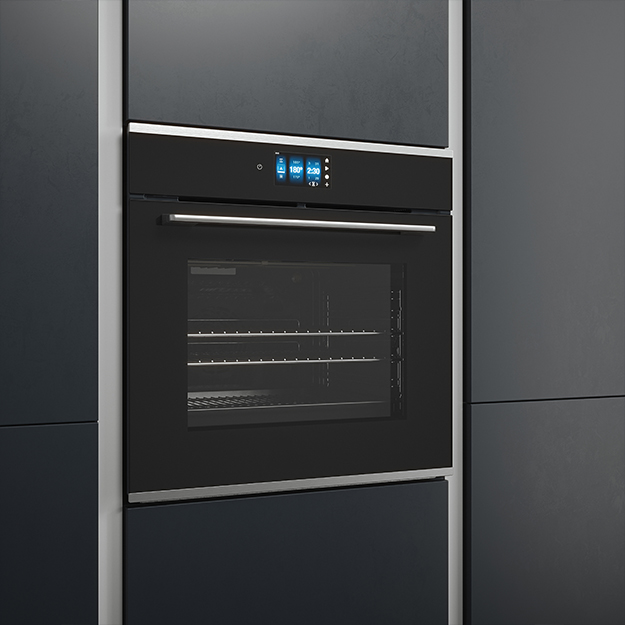
Oven Racks and Interior Design
The Importance of Adjustable Racks
Adjustable oven racks are essential for accommodating various cookware sizes and types. They provide the flexibility to position dishes at the ideal height for optimal cooking results. Without adjustable racks, you may face limitations in the types of dishes you can prepare simultaneously.
Oven Interior Materials
Oven interiors come in different materials, each with its own advantages:
Stainless Steel: Known for its durability and resistance to stains and odours.
Porcelain: Features a smooth, easy-to-clean surface, but may require gentler handling to avoid chipping.
Carefully considering these essential features will help you select an oven that aligns with your cooking preferences and kitchen needs, ensuring an enjoyable and efficient cooking experience.
Energy Efficiency and Sustainability
When considering a single electric oven for your kitchen, it's important to factor in energy efficiency and sustainability. In this section, we'll delve into the energy-saving aspects of single electric ovens and provide tips for making environmentally conscious choices.
The Energy Efficiency of Single Electric Ovens
Single Electric Ovens: A Greener Choice
Electric ovens, in general, are known for their energy efficiency compared to some other cooking methods, such as gas ovens. Single electric ovens are designed to deliver consistent and precise heat, resulting in efficient cooking. They convert a significant portion of the energy they consume into direct heat for cooking, reducing wastage.
How to Choose an Energy-Efficient Oven
Factors to Consider
When selecting an energy-efficient single electric oven, consider the following factors:
Energy Efficiency Rating: Look for ovens with high energy efficiency ratings, typically indicated by labels or certifications. These appliances are designed to optimise energy use.
Size and Cooking Needs: Choose an oven size that matches your cooking needs. A larger oven may consume more energy for smaller meals, so selecting the right size is crucial.
Insulation: Well-insulated ovens retain heat better, reducing the need for additional energy to maintain the desired cooking temperature.
Cooking Settings: Ovens with versatile cooking settings and precise temperature controls enable you to cook efficiently by using the right settings for each dish.
Self-Cleaning Options: Some self-cleaning methods, like steam cleaning, are more energy-efficient than others, as they use less energy while maintaining a clean interior.
Tips for Reducing Energy Consumption During Cooking
Efficient Cooking Practices
To make your cooking more energy-efficient and sustainable, follow these tips:
Preheat Wisely: Preheat the oven only when necessary. Many dishes don't require a preheated oven, and you can start cooking as soon as you put them in.
Use Oven Lights: Check on your dishes through the oven window or use the oven light instead of opening the door, which can let out a significant amount of heat.
Cook Multiple Dishes: When possible, cook multiple dishes at once to make the most of the oven's capacity and reduce overall cooking time.
Cook with Lids and Covers: When using pots and pans in the oven, cover them with lids or foil to retain heat and moisture, allowing you to cook at lower temperatures.
Regular Maintenance: Keep your oven well-maintained by cleaning it regularly. A clean oven operates more efficiently.
By considering the energy efficiency of single electric ovens and implementing these energy-saving practices, you can make more sustainable choices in your kitchen while enjoying delicious home-cooked meals.
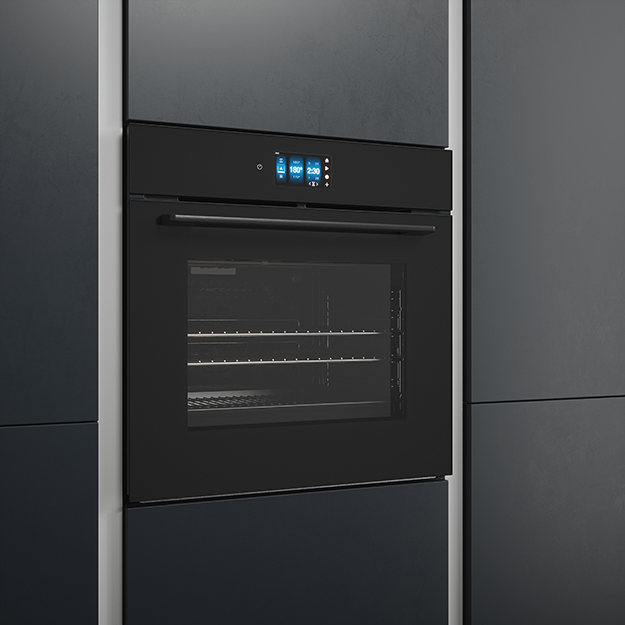
Maintenance and Care
Proper maintenance and care of your single electric oven are essential to ensure its longevity and optimal performance. In this section, we'll provide guidelines for cleaning and maintaining your oven, tips for handling common issues, and the importance of regular servicing.
Cleaning and Maintaining Your Single Electric Oven
Regular Cleaning Routine:
Interior Cleaning: Allow the oven to cool before cleaning. Remove racks and wipe the interior with a damp cloth or a mixture of warm water and mild detergent. For stubborn stains, use a non-abrasive oven cleaner.
Racks and Trays: Soak racks and trays in warm, soapy water and scrub with a non-abrasive sponge or brush. Rinse thoroughly and dry before placing them back in the oven.
Oven Door: Clean the oven door and glass using a suitable oven glass cleaner or a mixture of water and vinegar. Ensure the door gasket is intact and clean to maintain a proper seal.
Exterior: Wipe the exterior of the oven with a damp cloth and mild detergent. Polish stainless steel surfaces with a stainless steel cleaner.
Handling Common Issues and Troubleshooting
Uneven Cooking: If your oven cooks unevenly, it may be due to improper rack placement. Adjust the racks to ensure proper air circulation. Consider using a separate oven thermometer to verify temperature accuracy.
Faulty Heating Element: If you suspect a heating element issue, such as uneven cooking or no heat, consult your oven's manual for guidance on element replacement or seek professional help.
Oven Not Heating: Check that the oven is correctly plugged in and that the circuit breaker hasn't tripped. If it still doesn't heat, contact a technician to examine the heating elements and thermostat.
Faulty Door Seal: A damaged door seal can result in heat loss and inefficient cooking. If you notice gaps or damage, replace the seal or consult a technician.
The Importance of Regular Servicing
Regular servicing by a qualified technician is vital to ensure the safety and efficiency of your single electric oven. Here's why it's important:
Safety: Routine servicing can identify and address potential safety hazards, such as faulty wiring or damaged heating elements.
Efficiency: A well-maintained oven operates more efficiently, saving energy and reducing cooking times.
Longevity: Regular servicing can extend the lifespan of your oven, saving you money on premature replacements.
Warranty: Some warranties may require periodic servicing to remain valid, so it's crucial to adhere to manufacturer recommendations.
Follow the manufacturer's guidelines regarding servicing intervals or consult a professional if you experience issues that you cannot resolve on your own. By keeping your oven clean, addressing common issues promptly, and scheduling regular servicing, you can enjoy trouble-free cooking and extend the life of your appliance.
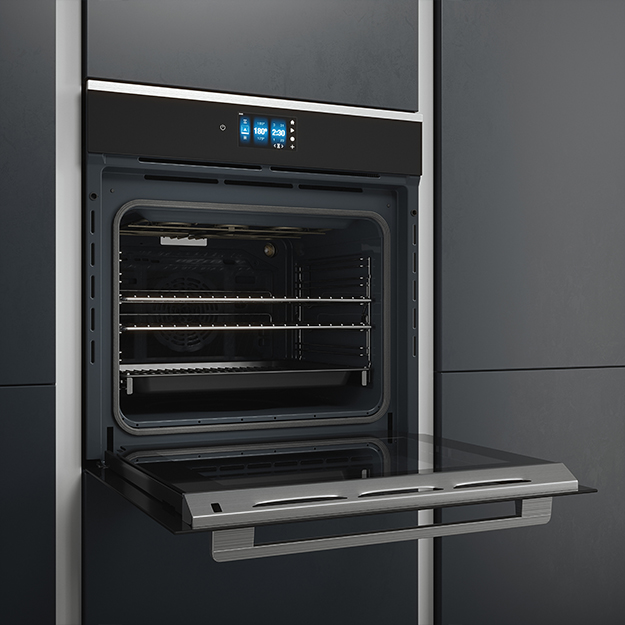
Budget Considerations
When shopping for a single electric oven, budget considerations play a significant role in your decision-making process. In this section, we'll discuss the price range of single electric ovens, the factors that influence their cost, and offer tips for finding the best value for your budget.
Price Range of Single Electric Ovens
The price of single electric ovens can vary widely depending on several factors, including brand, features, size, and additional functions. Here's an overview of the typical price range:
Entry-Level Ovens (£150 - £200): These budget-friendly ovens offer essential cooking functions and basic features. They are suitable for those with minimal cooking requirements.
Mid-Range Ovens (£200 - £400): Mid-range ovens provide a balance of features and affordability. They often include additional cooking modes, digital controls, and better build quality.
High-End Ovens (£400+): High-end ovens from reputable brands come with advanced features, cutting-edge technology, larger capacities, and superior build quality. They cater to serious home chefs and cooking enthusiasts.
Factors Influencing Cost
Several factors can significantly influence the cost of a single electric oven:
Influence | Factor |
Brand | Well-known brands often come with a higher price tag due to their reputation for quality and reliability. |
Size | Larger ovens with increased internal capacity tend to cost more than smaller models. |
Features | The number and complexity of features, such as convection cooking, self-cleaning, digital controls, and smart technology, can impact the price. |
Energy Efficiency | Energy-efficient models may have a higher initial cost but can result in long-term savings on utility bills. |
Material and Build Quality | Ovens made with high-quality materials, like stainless steel, are generally more expensive but tend to be more durable. |
Tips for Finding the Best Value
To make the most of your budget and find the best value when purchasing a single electric oven, consider these tips:
Prioritise Needs: Determine which features and functions are essential for your cooking style and needs. Avoid paying for features you won't use.
Compare models: Research various models and read reviews to find a reputable manufacturer that offers a balance of quality and affordability.
Consider Size: Choose an oven size that suits your household's cooking habits. Opting for the right size can prevent you from overspending on unnecessary capacity.
Energy Efficiency: Look for ovens with high energy efficiency ratings to save on long-term operating costs.
Sales and Promotions: Keep an eye out for seasonal sales, discounts, and promotions, which can provide significant savings.
Warranty: Consider the warranty offered by the manufacturer. A longer warranty period can provide peace of mind and potentially save you money on repairs.
Read User Reviews: Learn from the experiences of others by reading user reviews and testimonials to ensure the oven meets your expectations.
By carefully assessing your needs, comparing options, and considering factors that influence cost, you can find a single electric oven that offers the best value for your budget. Making an informed decision ensures that you get a reliable appliance that meets your cooking requirements without overspending.
Installation and Safety
Proper installation and safety precautions are crucial when it comes to using single electric ovens. In this section, we'll provide guidance on the correct oven installation procedures and discuss essential safety measures to ensure a safe cooking environment.
Proper Oven Installation
Professional Installation:
Consult an Electrician: Before installation, consult with a qualified electrician to ensure your kitchen's electrical system can support the oven's power requirements.
Location: Choose a suitable location for your oven, ensuring adequate ventilation and sufficient space for air circulation around the appliance.
Levelling: Ensure the oven is properly levelled to prevent uneven cooking and potential accidents.
Electrical Connections: a qualified electrician should connect the oven to the appropriate electrical circuit with the amp rating as specified in the manufacturer's instructions.
Ventilation: Install the oven with proper ventilation to dissipate heat and prevent overheating. Follow the manufacturer's guidelines for ventilation requirements.
Safety Measures When Using Single Electric Ovens
General Safety Precautions:
Read the Manual: Familiarise yourself with the oven's user manual to understand its features, functions, and safety guidelines.
Child Safety: If you have children, consider ovens with child safety locks and educate your children about the dangers of hot surfaces.
Unattended Cooking: Avoid leaving the oven unattended while it's in use. Use timers and alarms to remind you when dishes are ready.
Protective Gear: Use oven mitts or gloves when handling hot cookware or oven racks to prevent burns.
Common Safety Concerns and Precautions:
Burns: Ovens can reach high temperatures. Always use oven mitts when placing or removing dishes from the oven.
Fire Hazards: Never store flammable materials, such as paper towels or cloth, near the oven, and avoid using the oven for storage.
Overloading: Do not overload the oven with too many dishes or overcrowd it, as it can affect cooking quality and safety.
Cleaning: Keep the oven clean to prevent the accumulation of food debris or grease, which can pose a fire hazard. Follow the manufacturer's instructions for cleaning.
Ventilation: Ensure the oven's ventilation system is unobstructed to prevent overheating and reduce the risk of fire.
Maintenance: Regularly inspect and maintain your oven to address any issues promptly. Contact a professional technician for repairs.
By following proper installation procedures, adhering to safety measures, and addressing common safety concerns and precautions, you can enjoy the benefits of your single electric oven while maintaining a safe cooking environment for you and your family.
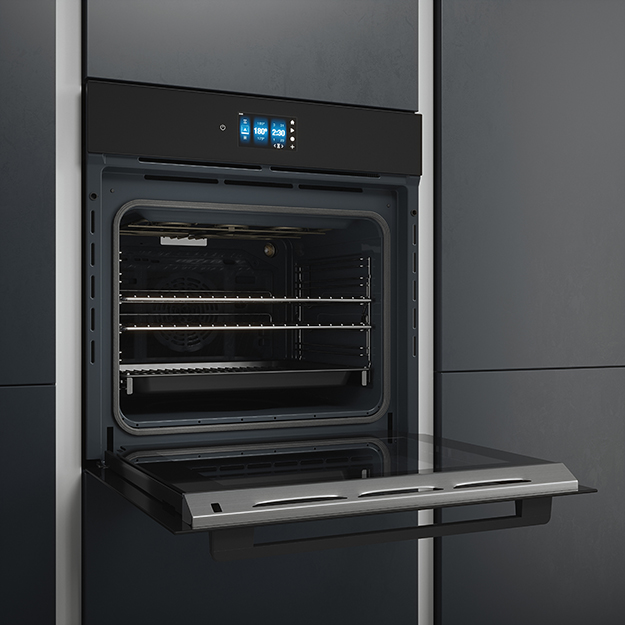
Frequently Asked Questions
How does a single electric oven work?
A single electric oven works by using electric heating elements, located at the top and/or bottom of the oven's interior, to generate heat. When you set the desired temperature, these elements heat up and maintain the temperature within the oven cavity, allowing you to bake, roast, or broil your food.
What are the benefits of a single electric oven over other types?
Single electric ovens offer several advantages, including precise temperature control, even cooking, ease of use, and a wide range of cooking modes. They are also typically more energy-efficient and provide consistent results compared to gas ovens.
How do I clean a single electric oven effectively?
To clean your single electric oven effectively, start by removing racks and trays. Wipe down the interior with a mixture of warm water and mild detergent or use an oven-specific cleaner for stubborn stains. Soak racks and trays in soapy water, scrub, rinse, and dry before placing them back. Clean the oven door and glass with a suitable oven glass cleaner or a mixture of water and vinegar.
What are the common problems with single electric ovens, and how can I troubleshoot them?
Common issues include uneven cooking, temperature inaccuracies, and heating element problems. To troubleshoot, ensure racks are correctly placed for even cooking, consider using an oven thermometer to verify temperature accuracy, and consult the oven's manual or a technician for heating element issues.
What are the energy efficiency ratings for single electric ovens?
Energy efficiency ratings can vary by model, but many single electric ovens are designed to be energy-efficient. Look for ovens with high energy efficiency ratings to reduce long-term energy costs. Some models also have features like convection cooking, which can improve efficiency.
How do I choose the right size and capacity for my needs?
Choosing the right size and capacity depends on your household's cooking requirements. Consider the number of people you regularly cook for and the types of dishes you prepare. A larger capacity oven is suitable for families, while smaller ovens are ideal for singles or couples.
What safety precautions should I take when using a single electric oven?
Safety measures include using oven mitts or gloves to prevent burns, keeping flammable materials away from the oven, not overloading the oven with too many dishes, and ensuring proper ventilation. Regular maintenance and following the manufacturer's safety guidelines are also essential for safe oven use.
Single Oven Glossary
Glossary of Common Single Oven Terminology
| Term | Definition |
|---|---|
| Fan Oven | An oven equipped with a fan and exhaust system to circulate hot air evenly, ensuring faster and more even cooking or baking. |
| Grill | A cooking method in which the heat source, typically located at the top of the oven, emits intense direct heat to quickly cook or brown the food's surface. |
| Preheat | The process of allowing the oven to reach the desired temperature before placing food inside, ensuring even cooking and accurate cooking times. |
| Thermostat | A device that regulates and maintains the temperature inside the oven, controlling when it turns on and off to keep the temperature constant. |
| Baking Stone | A flat, thick, and often circular stone used to evenly distribute heat in the oven, particularly for baking bread and pizza. |
| Conduction | The transfer of heat through direct contact between the cooking vessel and the food being prepared, as in the case of baking sheets or pans. |
| Self-Cleaning Oven | An oven equipped with a special cleaning cycle that heats to extremely high temperatures, reducing food residue to ash, which can then be easily wiped away. |
| Grill Pan | A specific pan used for grilling food, designed to catch drippings and allow for even cooking and browning. |
| Oven Shelf | A movable metal grid or shelf inside the oven that can be adjusted to different heights to accommodate various cooking needs. |
| Digital Display | A digital screen on the oven's control panel that shows the current temperature, cooking time, and other settings. |
| Temperature Probe | A device that can be inserted into the food to monitor its internal temperature, ensuring precise cooking and preventing overcooking. |
| Oven Gloves | Heat-resistant gloves or mitts designed to protect hands and arms when handling hot ovenware or baking sheets. |
| Oven Timer | A feature that allows you to set a specific time for cooking or baking, alerting you when the food is ready. |
| Grill Element | The heating element responsible for emitting high heat for grilling; usually located at the top of the oven. |
| Rapid Preheat | A function that allows the oven to reach the desired temperature more quickly, saving time and energy. |
| Convection Bake | A cooking mode in convection ovens that combines the fan and lower heating element for even baking. |
| Ceramic Heating Element | A heating element made of ceramic material, known for its efficient and even heat distribution. |
| Sabbath Mode | A feature that disables certain oven functions and lights for religious observance purposes during the Sabbath and Jewish holidays. |
| Oven Vent | A small opening or vent usually located at the rear of the oven, designed to release excess heat and moisture. |
| Oven Thermometer | An independent thermometer placed inside the oven to monitor and ensure the accuracy of the internal temperature. |
| Grill Pan Insert | A removable accessory that fits into a grill pan, allowing for different cooking configurations and easier clean-up. |
| Oven Cleaning Solution | A specially formulated cleaning product used to remove tough stains and grease from the oven's interior. |
| Delayed Start | A feature that allows you to programme the oven to start cooking at a specified time, convenient for meal planning. |
| Oven Door Seal | The gasket or seal around the oven door that prevents heat from escaping and maintains temperature consistency. |
| Steam Cleaning | A cleaning method that uses steam to loosen and remove food residue and stains from the oven's interior. |
Top Selling Single Electric Ovens from MyAppliances
Upgrade your kitchen with our range of ovens, including fan, multifunction, and self-cleaning options. From even heat distribution in fan ovens to versatile cooking modes in multifunction ovens and hassle-free maintenance with self cleaning ovens, we have everything to suit your cooking needs. Experience convenience and innovation in your kitchen with our oven solutions.
More buying guides
![Ultimate Oven Buying Guide]() Oven Buying Guides
Oven Buying GuidesWelcome to the comprehensive guide on electric ovens! Whether you're a passionate home cook or someone who simply enjoys preparing delicious meals, this guide is here to provide you with valuable insights into the world of electric ovens.
![The Ultimate Pyrolytic Oven Guide]() Oven Buying Guides
Oven Buying GuidesA pyrolytic oven is a self-cleaning appliance that utilises high temperatures to incinerate food residue and grease, eliminating the need for manual scrubbing. During the cleaning cycle, which reaches temperatures as high as 400 to 500 degrees Celsius, the oven locks its door and converts organic matter into ash.
![Oven Types: A Comprehensive Guide to Choosing the Right Oven for Your Home]() Oven Buying Guides
Oven Buying GuidesWhen it comes to buying a new oven, the options can seem overwhelming. With over 20 different types of ovens available, each with unique features and functionalities, it can be difficult to determine which one is right for you.
![The Ultimate Guide to Gas Ovens]()
In this comprehensive guide, we'll delve into the history and evolution of gas ovens, explore their advantages and disadvantages, and provide you with everything you need to know about selecting, installing, and maintaining these kitchen appliances.

